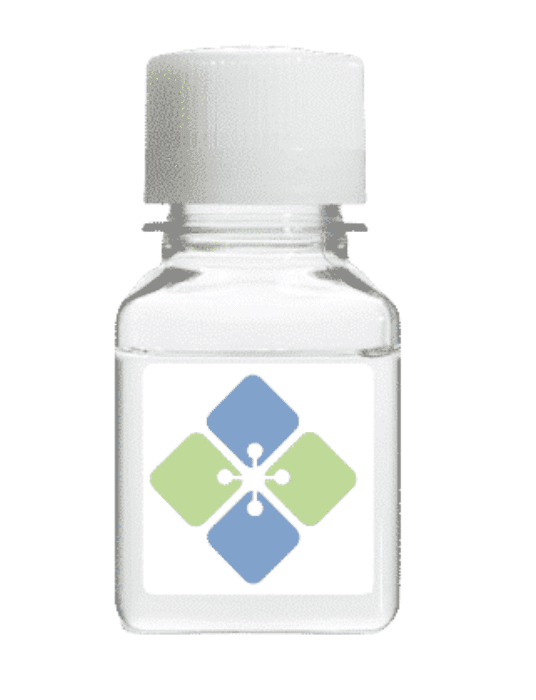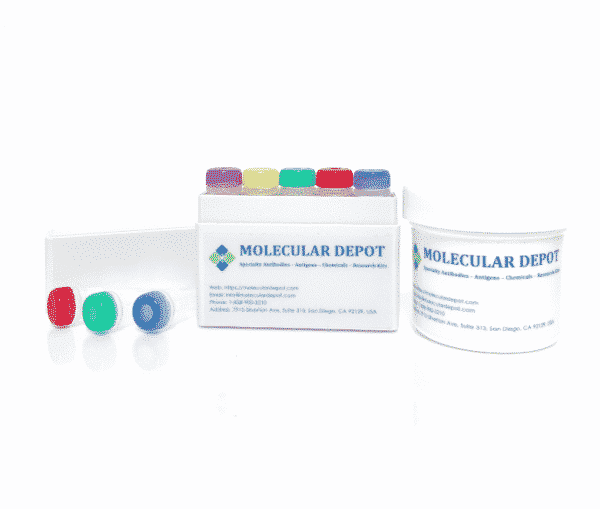

Polystyrene beads with Amine Groups (20 nm)
Catalog Number: B2013396 (1 ml)
Polystyrene beads with Amine Groups (20 nm) is a high quality 20 nm Polystyrene beads with Amine Groups. This product has been used as molecular tool for various biochemical applications. It has also been used in a wide array of other chemical and immunological applications. Custom bulk amounts of this product are available upon request.
Live enquiry about this product via Text/SMS: 1-858-900-3210.
Product Description
Polystyrene beads with Amine Groups (20 nm)
Catalog number: B2013396
Lot number: Batch Dependent
Expiration Date: Batch dependent
Amount: 1 ml
Molecular Weight or Concentration: N/A
Supplied as: Suspension
Applications: molecular tool for various biochemical applications
Storage: 2-8 °C
Keywords: Polystyrene beads Aminated
Grade: Biotechnology grade. All products are highly pure. All solutions are made with Type I ultrapure water (resistivity >18 MΩ-cm) and are filtered through 0.22 um.
References:
1: Kiremitçi M, Pişkin E. Cell adhesion to the surfaces of polymeric beads Biomater Artif Cells Artif Organs. 1990;18(5):599-603.
2: Townsend JB, Shaheen F, Liu R, Lam KS. Jeffamine derivatized TentaGel beads and poly(dimethylsiloxane) microbead cassettes for ultrahigh-throughput in situ releasable solution-phase cell-based screening of one-bead-one-compound combinatorial small molecule libraries J Comb Chem. 2010 Sep 13;12(5):700-12.
3: Tekabe Y, Einstein AJ, Johnson LL, Khaw BA. Targeting very small model lesions pretargeted with bispecific antibody with 99mTc-labeled high-specific radioactivity polymers Nucl Med Commun. 2010 Apr;31(4):320-7.
4: Zhang Y, McElrea A, Sanchez GV Jr, Do D, Gomez A, Aguirre SL, Rendy R, Klumpp DA. Dicationic electrophiles from olefinic amines in superacid J Org Chem. 2003 Jun 27;68(13):5119-22.
5: Jain R, Agarwal A, Kierski PR, Schurr MJ, Murphy CJ, McAnulty JF, Abbott NL. The use of native chemical functional groups presented by wound beds for the covalent attachment of polymeric microcarriers of bioactive factors Biomaterials. 2013 Jan;34(2):340-52.
6: Rose SL, Babensee JE. Procoagulant phenotype of endothelial cells after coculture with biomaterial-treated blood cells J Biomed Mater Res A. 2005 Mar 1;72(3):269-78.
7: Byun Y, Jacobs HA, Kim SW. Heparin surface immobilization through hydrophilic spacers: thrombin and antithrombin III binding kinetics J Biomater Sci Polym Ed. 1994;6(1):1-13.
8: You JB, Yoo Y, Oh MS, Im SG. Simple and reliable method to incorporate the Janus property onto arbitrary porous substrates ACS Appl Mater Interfaces. 2014 Mar 26;6(6):4005-10.
9: Cho WS, Duffin R, Poland CA, Howie SE, MacNee W, Bradley M, Megson IL, Donaldson K. Metal oxide nanoparticles induce unique inflammatory footprints in the lung: important implications for nanoparticle testing Environ Health Perspect. 2010 Dec;118(12):1699-706.
10: Zhu Y, Yongxin C, Mingli Y, Fritz JS. Preparation and applications of weak acid cation exchanger based on monodisperse poly(ethylvinylbenzene-co-divinylbezene) beads J Chromatogr A. 2005 Aug 26;1085(1):18-22.
Products Related to Polystyrene beads with Amine Groups (20 nm) can be found at Conjugates
Additional Information
| Weight | 0.15 oz |
|---|---|
| Dimensions | 2 × 0.5 × 0.5 in |



